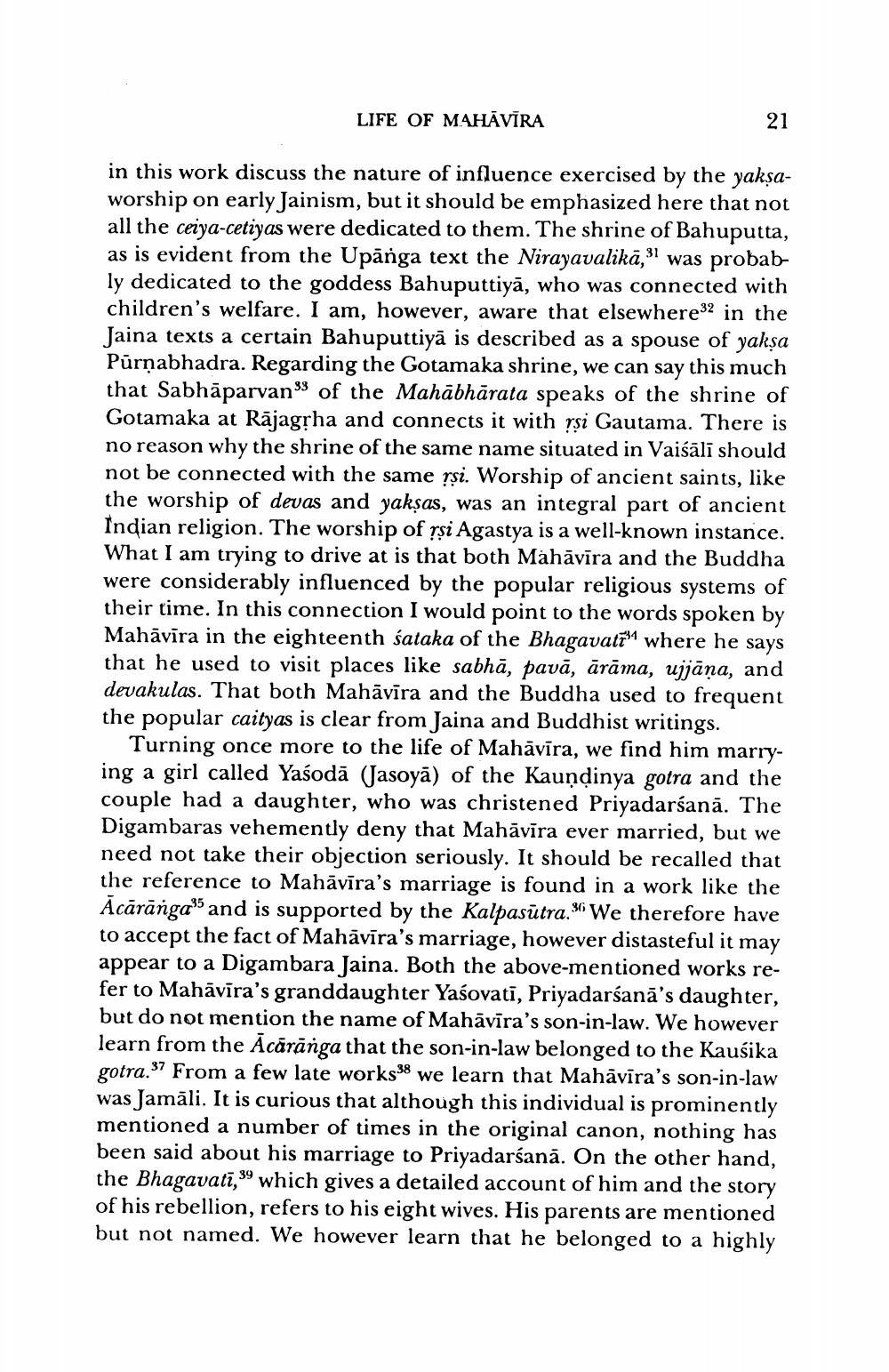________________
LIFE OF MAHĀVĪRA
21
in this work discuss the nature of influence exercised by the yakşaworship on early Jainism, but it should be emphasized here that not all the ceiya-cetiyas were dedicated to them. The shrine of Bahuputta, as is evident from the Upānga text the Nirayavalikā,was probably dedicated to the goddess Bahuputtiyā, who was connected with children's welfare. I am, however, aware that elsewhere32 in the Jaina texts a certain Bahuputtiyā is described as a spouse of yakşa Pūrnabhadra. Regarding the Gotamaka shrine, we can say this much that Sabhāparvanof the Mahābhārata speaks of the shrine of Gotamaka at Rājagļha and connects it with rși Gautama. There is no reason why the shrine of the same name situated in Vaiśālī should not be connected with the same rsi. Worship of ancient saints, like the worship of devas and yaksas, was an integral part of ancient Indian religion. The worship of sși Agastya is a well-known instance. What I am trying to drive at is that both Mahāvīra and the Buddha were considerably influenced by the popular religious systems of their time. In this connection I would point to the words spoken by Mahāvīra in the eighteenth śataka of the Bhagavattwhere he says that he used to visit places like sabhā, pavā, ārāma, ujjāņa, and devakulas. That both Mahāvīra and the Buddha used to frequent the popular caityas is clear from Jaina and Buddhist writings.
Turning once more to the life of Mahāvīra, we find him marrying a girl called Yasodā (Jasoyā) of the Kauņdinya gotra and the couple had a daughter, who was christened Priyadarśanā. The Digambaras vehemently deny that Mahāvīra ever married, but we need not take their objection seriously. It should be recalled that the reference to Mahāvīra's marriage is found in a work like the Ācārānga35 and is supported by the Kalpasūtra. 56 We therefore have to accept the fact of Mahāvīra's marriage, however distasteful it may appear to a Digambara Jaina. Both the above-mentioned works refer to Mahāvīra's granddaughter Yaśovati, Priyadarśanā's daughter, but do not mention the name of Mahāvīra's son-in-law. We however learn from the Acāränga that the son-in-law belonged to the Kausika gotra." From a few late works we learn that Mahāvīra's son-in-law was Jamāli. It is curious that although this individual is prominently mentioned a number of times in the original canon, nothing has been said about his marriage to Priyadarśanā. On the other hand, the Bhagavatī,39 which gives a detailed account of him and the story of his rebellion, refers to his eight wives. His parents are mentioned but not named. We however learn that he belonged to a highly




